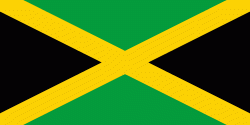Westmoreland Parish (Westmoreland)
Westmoreland is the westernmost parish in Jamaica, located on the south side of the island. It is situated south of Hanover, southwest of Saint James, and northwest of Saint Elizabeth, in the county of Cornwall. The chief town and capital is Savanna-la-Mar. Negril, a famous tourist destination, is also situated in the parish.
The earliest inhabitants of Westmoreland were the Arawak and Ciboney Indians. The Ciboney were first to arrive, from the coast of South America, around 500 BC. Known as "cave dwellers", they lived along the cliffs of Negril. The labyrinth of caves and passageways beneath what is now the Xtabi Hotel in Negril are one of the first known settlements of Ciboney Indians in Jamaica.
Christopher Columbus stopped at what became Westmoreland on his second voyage when he landed in Jamaica. One of the first Spanish settlements was also built at present-day Bluefields in this parish.
The English took over the island from Spanish rule in 1655. Colonists named the parish Westmoreland in 1703, for it was the most westerly point of the island. In 1730, Savanna-la-Mar, a coastal port, was designated to replace Banbury as the capital of the parish. A fort was built in the 1700s to defend the port against pirates. Today it is one of the historic sites of the parish.
In the mid-18th century, Westmoreland was, acre for acre, one of the most profitable territories, not only in Jamaica, but throughout the British empire. The plains of Westmoreland were densely populated with sugar plantations, and by the time of Tacky's War Westmoreland had about 15,000 slaves labouring on more than 60 sugar plantations, many of them owned by leading men of the island, such as William Beckford and Arthur Forest.
The name Westmoreland appears to stem from Dr John Drummond (1744-1804) who had several plantations on the island (foremost being the Drummond Estate) plus vast lands at Savanna-la-Mar which had been owned by his parents. He was surgeon to the Westmoreland Regiment of Foot from 1784. This British regiment was officially on the island from 1802 to 1813 but the name appears to pre-date this, for John Drummond refers to his "Westmoreland estate" in his will of 1793.
In 1938, riots at the Frome sugar estate changed the course of Jamaica's history. In the wake of these riots, the legislature passed legislation for universal adult suffrage in 1944, as well as a new constitution, which was approved by the Crown. This put Jamaica on the road to self-government and eventually independence. The two national heroes, Sir Alexander Bustamante and Norman Washington Manley, emerged as political leaders during this time.
The earliest inhabitants of Westmoreland were the Arawak and Ciboney Indians. The Ciboney were first to arrive, from the coast of South America, around 500 BC. Known as "cave dwellers", they lived along the cliffs of Negril. The labyrinth of caves and passageways beneath what is now the Xtabi Hotel in Negril are one of the first known settlements of Ciboney Indians in Jamaica.
Christopher Columbus stopped at what became Westmoreland on his second voyage when he landed in Jamaica. One of the first Spanish settlements was also built at present-day Bluefields in this parish.
The English took over the island from Spanish rule in 1655. Colonists named the parish Westmoreland in 1703, for it was the most westerly point of the island. In 1730, Savanna-la-Mar, a coastal port, was designated to replace Banbury as the capital of the parish. A fort was built in the 1700s to defend the port against pirates. Today it is one of the historic sites of the parish.
In the mid-18th century, Westmoreland was, acre for acre, one of the most profitable territories, not only in Jamaica, but throughout the British empire. The plains of Westmoreland were densely populated with sugar plantations, and by the time of Tacky's War Westmoreland had about 15,000 slaves labouring on more than 60 sugar plantations, many of them owned by leading men of the island, such as William Beckford and Arthur Forest.
The name Westmoreland appears to stem from Dr John Drummond (1744-1804) who had several plantations on the island (foremost being the Drummond Estate) plus vast lands at Savanna-la-Mar which had been owned by his parents. He was surgeon to the Westmoreland Regiment of Foot from 1784. This British regiment was officially on the island from 1802 to 1813 but the name appears to pre-date this, for John Drummond refers to his "Westmoreland estate" in his will of 1793.
In 1938, riots at the Frome sugar estate changed the course of Jamaica's history. In the wake of these riots, the legislature passed legislation for universal adult suffrage in 1944, as well as a new constitution, which was approved by the Crown. This put Jamaica on the road to self-government and eventually independence. The two national heroes, Sir Alexander Bustamante and Norman Washington Manley, emerged as political leaders during this time.
Map - Westmoreland Parish (Westmoreland)
Map
Country - Jamaica
Currency / Language
| ISO | Currency | Symbol | Significant figures |
|---|---|---|---|
| JMD | Jamaican dollar | $ | 2 |
| ISO | Language |
|---|---|
| EN | English language |

















